Renault Rafale review: nice inside but hard-riding – the Germans won’t be losing any sleep
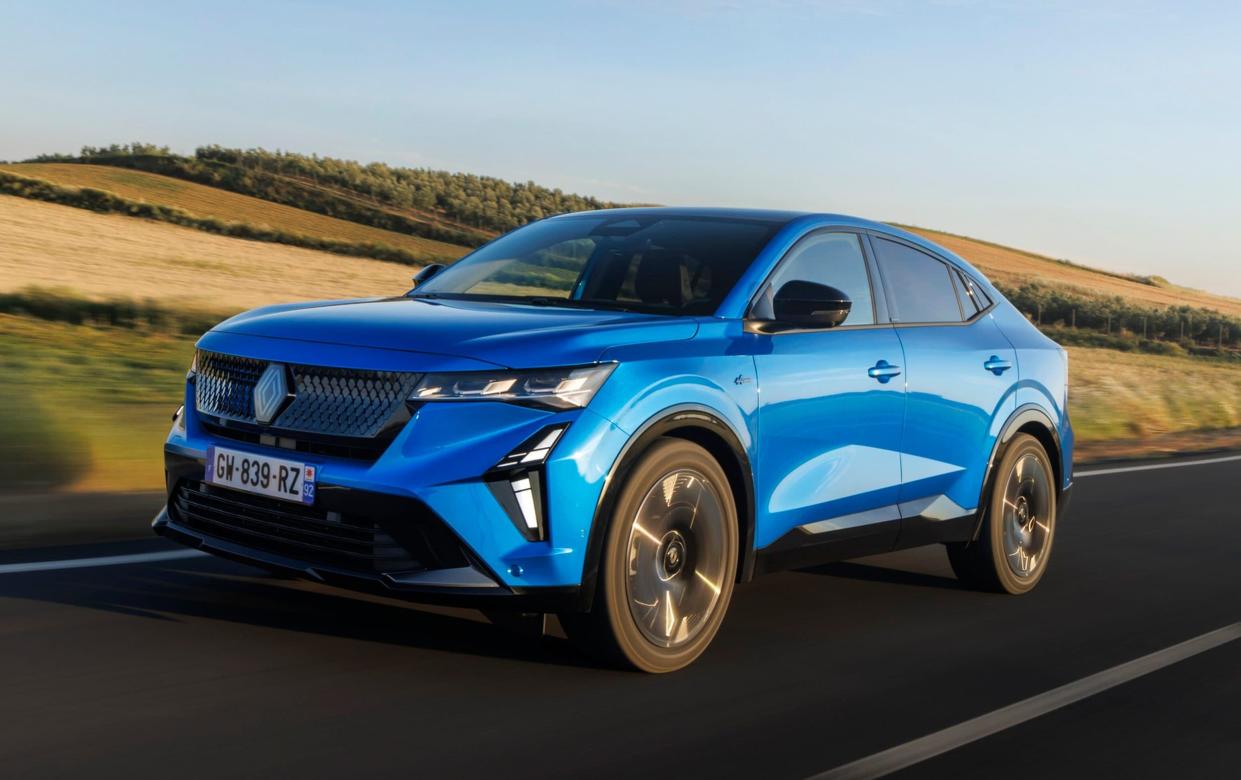
Here we go again, as Renault launches a large car at an unsuspecting world. What was that definition of insanity wrongly attributed to Einstein? Doing the same thing over and over again and expecting different results?
To be fair, in the late Twenties and Thirties Renault had some success with its range of six- and eight-cylinder prestige models such as the Reinastella and Vivastella. But (and it’s a crucial detail) to tempt buyers Louis Renault had to remove his company’s lozenge badge and replace it with a large star. No one wanted a coachbuilt Renault, even back then.
More recently? Most of us recall the great small Renaults, the R4, the Dauphine, the R8, the R5, the Clio and the original Twingo. But the big cars? Sorry.
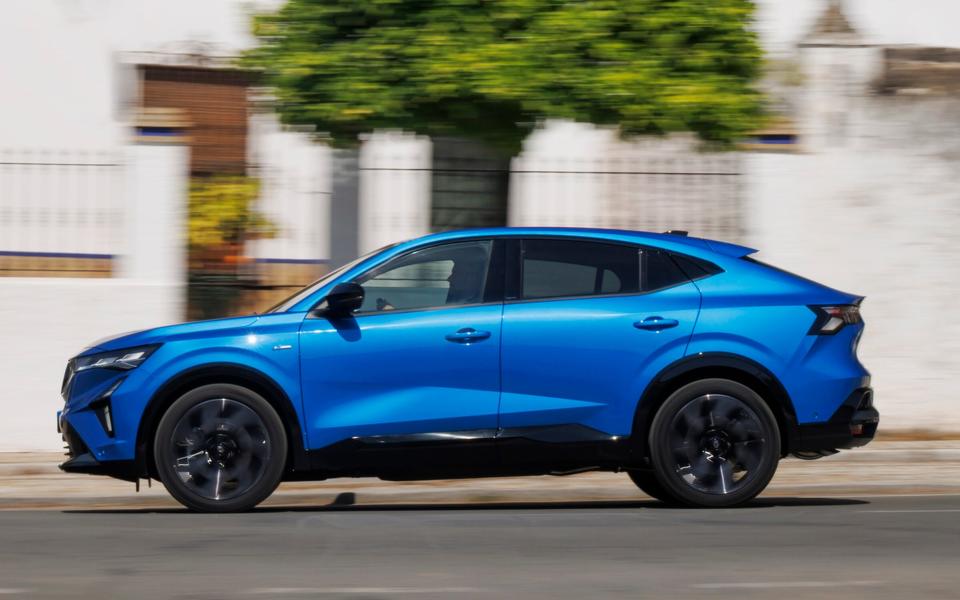
The R25 of 1984 was Renault’s sleek flagship designed by Gaston Juchet and Robert Opron, who had styled the renowned Citroën SM. The interior was designed by Marcello Gandini and the R25 sported class-leading aerodynamics. It looked cool and did reasonable business (781,000 in nine years of production) but sold mainly to French civil servants. The less said about its 1992 replacement, the Safrane, the better. Ditto the much-admired but seldom-purchased Vel Satis or Avantime.
Taking on the Germans
Yet Renault continues to have an almost unbelievable faith in its ability to take on the all-conquering German manufacturers in this D/E segment premium market. Flashed up on the screen during the launch of the new Rafale SUV coupé was the phrase: “Ditch the Deutsch.”
Dangerous ground this, especially if you recall the “Unmistakably German – Made In France” advertising campaign for the 2007 Citroën C5 Mk2. While this award-winning ad has been watched several million times on YouTube, the C5 was an unmitigated sales disaster in the UK, selling only 17,100 in eight years before it was withdrawn in 2016; only 237 were sold in the whole of 2015.
Rafale defined
The name comes from the elegant record-breaking Caudron-Renault single-seat aircraft. Louis Renault purchased Caudron in 1933 and named his aeroplanes after winds: Cyclone, Typhon, Simoun and Rafale. The Rafale C460 only exists as a replica, but the original was built in 1934, powered by a Renault 433 six-cylinder 7.95-litre aero engine. Hélène Boucher, a noted aviator contracted to Caudron, set several records including the 1,000km speed title in 1931.
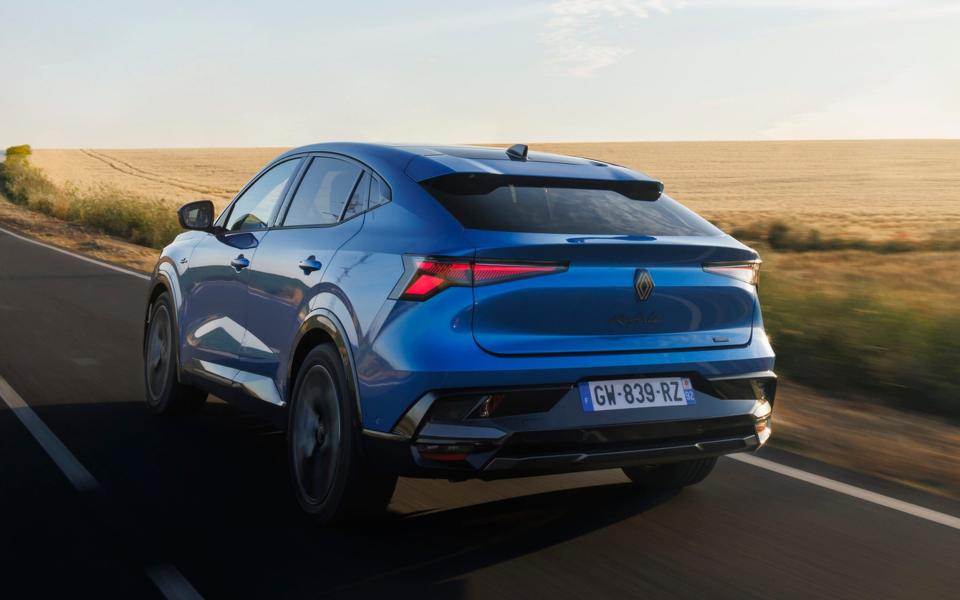
It’s a nice name, though the style is of that portmanteau breed, the coupé SUV, which have gained ground as folk seek replacements for their boxy SUVs. In the presentation Renault studiously avoided mention of the uncannily similar 408 from French rival Peugeot, preferring instead that we talk about the BMW X2 and Audi Q3 Sportback as rivals…
The Rafale is 4,710mm long, 2,085mm wide (1,866mm without mirrors) and 1,613mm high and in tested form weighs about 1.7 tonnes.
This two-wheel-drive E-Tech full hybrid 200hp model is on sale now with prices starting at £38,195 (£44,695 as tested) and first deliveries this autumn. A more powerful, tax-friendly plug-in hybrid (PHEV) is coming later this year with 300hp and a bigger battery pack which gives a claimed all-electric range of 61 miles.
The body is typical of the style, superficially attractive yet generic, with enormous 20-inch wheels as standard. I liked the detailed radiator grille, but it will be impossible to clean, although the stacked headlights add distinction.
Interior design
The dash adds a touch of class to a comfortable and spacious interior. There’s a pleasant slate insert in the facia, flock linings to the door bins, a grey twill headlining and the fabrics and plastics are soft to the touch, attractive and appear easy to keep clean. It’s nicely put together, with tight panel gaps and useful storage spaces.
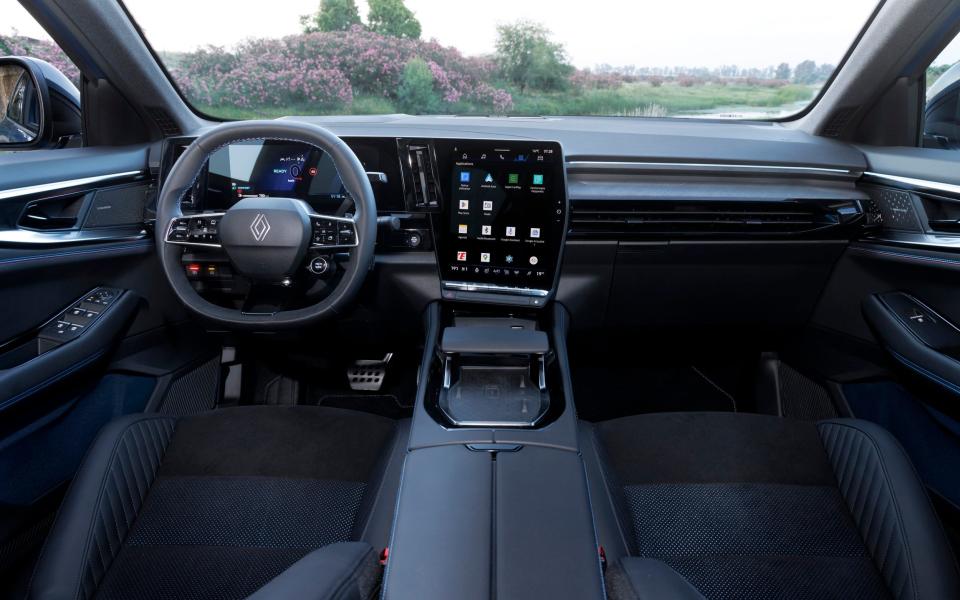
The seats in the top-model Alpine trim version are suede-effect Alcantara and have a supportive but comfortable shape. The steering wheel isn’t round, which some will hate, but you get used to it. The driving position is generously adjustable; nothing is a long reach away.
The facia uses Renault’s upright touchscreen which has decent graphics and is superficially quite easy to use. Go further than simple adjustments to the radio, heater and satnav and you can enter a world of confusion and bewilderment, however. This is especially the case on the move; the screen icons are small and difficult to touch cleanly without spending too much time with your eyes averted from the road.
For the company which introduced the idea of safety-related electronics, Renault might well be regarded as having a brass neck in including a “switch-it-all-off” button for the driver aids, speed-limit warnings and so on, but that button is very welcome nonetheless. For those who value such things, Renault’s R Link system will allow access to up to 50 different apps, though I’d rather you didn’t sift through them if I’m driving in the vicinity at the time.
In the rear there’s head and leg space for three adults across. Under the powered tailgate there’s 535 litres of space, extendable to 1,709 litres if you fold the rear seat backs onto their bases. Generous as this space is, the entire load bed is heavily stepped so it’s hard to slide long items in.
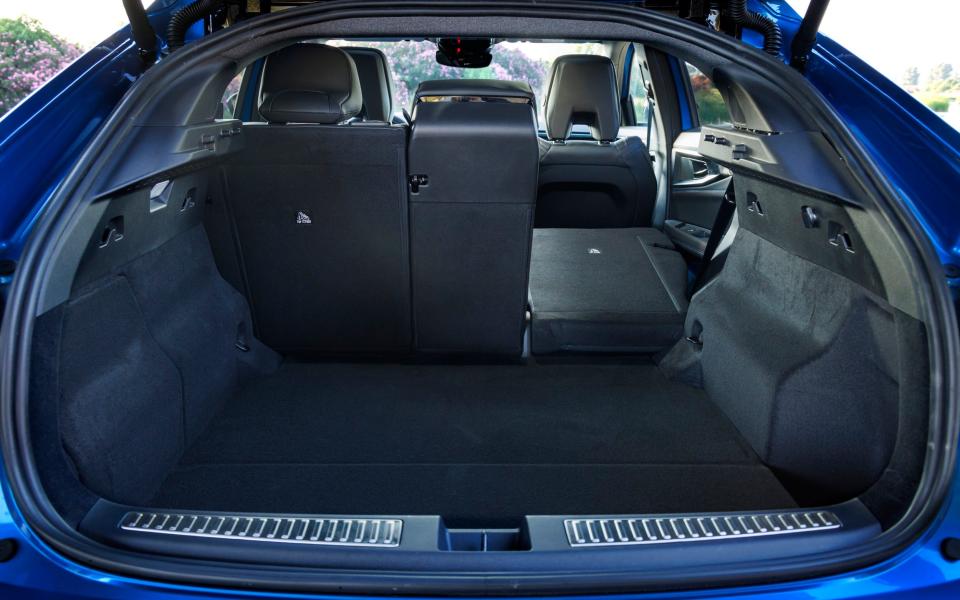
On the road
From the off the Rafale feels taut and dynamically sound even if the ride feels granular, as though riding over stone chips. With a tall body the suspension’s roll resistance has to be stepped up. While that makes the Rafale feel more sporting, the ride suffers even on smooth roads and there’s lots of side-to-side head tossing over the broken edges.
The suspension copes with longer undulations well and the Rafale is capable of being hustled with alacrity, but the best premium cars of this size manage a careful compromise of ride quality, precision handling and control feedback. They don’t always achieve it, but in comparison the Rafale isn’t in the same universe.
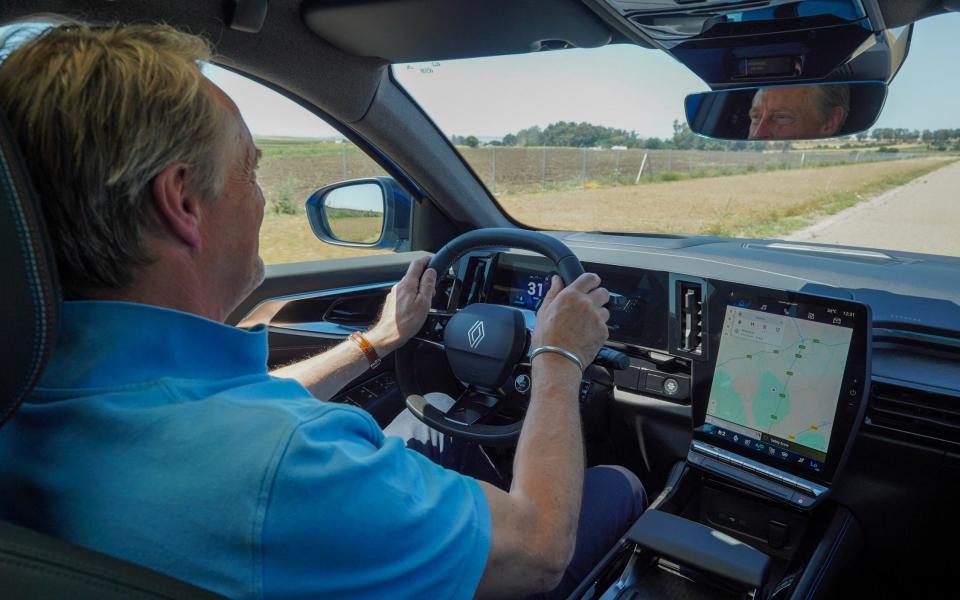
In short it’s all a bit one-dimensional; sporting and that’s it. You can fiddle with the Renault Multi-Sense steering wheel button all you like, but it won’t alter the ride and handling of this passively-damped, steel-sprung chassis. The MacPherson strut, multi-link rear suspension stays the same and you can’t help feeling that Renault economised on the quality of the dampers.
Standard rear-wheel steering on all models means they turn neatly at speed and the turning circle of 10.4 metres between kerbs is good (although a London cab has to be able to turn in less than 8.535 metres). For all that, the steering lacks on-centre response so you’re never too sure how the nose will turn before you commit to a corner; the Rafale isn’t quite the joy to drive that some rivals are.
As for the hybrid system, the main motor and the smaller secondary motor drive the car and recharge on over-run, but the smaller unit starts the 1.2-litre turbocharged three-cylinder engine and spins up the gearbox to synchronise the shifting and maintain the battery charge above a minimum level to restart the engine. It’s a clever system and has been fantastically refined since I first tried it in 2019, however the amount of sensors and wiring around the transmission makes me a little fearful for its longevity. Similarly the ancillaries: water pump, air-conditioning compressor, transmission- and engine-oil pumps, power steering and brake servo, which are all electrically driven.
The dog-clutch gearbox is augmented with a two-speed transaxle, giving the option of up to eight proper gear ratios, although as both transmissions have a geared neutral the system is effectively juggling up to 15 ratios in total. It’s complicated, refined and almost unnoticeable in road driving, only occasionally do you hear a click of ratios engaging.
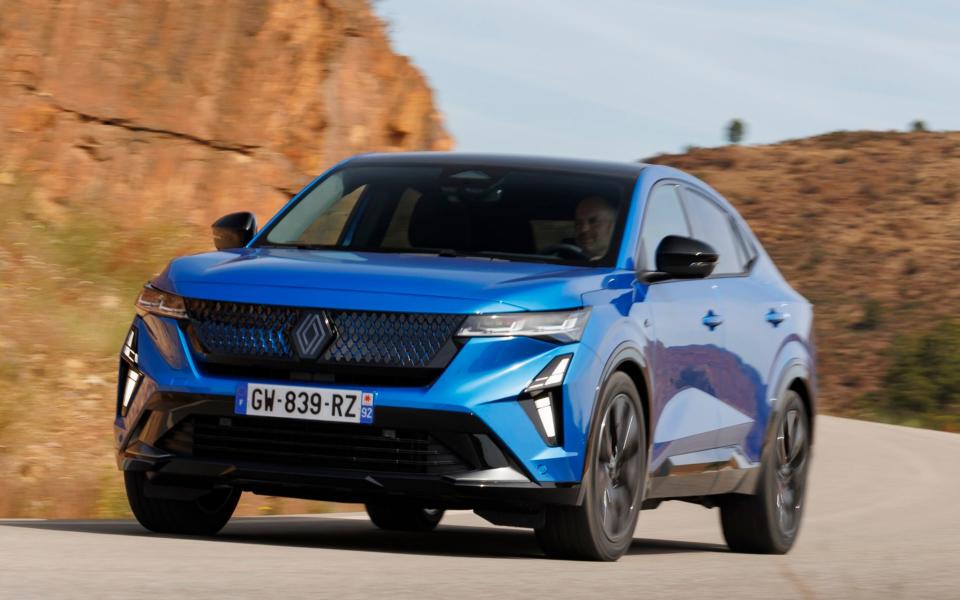
Let’s be clear, however, this is not a fast car. The badging of Renault’s performance brand Alpine is a trim level only and it’s hard to believe that this front-wheel-drive model will manage its posted 0-62mph time of 8.9sec. Overtaking can be achieved, but to get safely past you need to look far ahead, carry speed and wind up the 1.2-litre petrol engine with the lithium ions flying across the battery.
Against a claimed Combined economy of 60.1mpg, I managed just over 40mpg in brisk driving but 68.9mpg rigidly sticking just below every speed limit and using the Eco mode.
The Telegraph verdict
The Rafale is the seventh SUV in Renault’s range, which some might regard as several too many, although Renault justifies it by saying it has distinct battery electric SUVs and then hybrid and plug-in hybrid SUVs. But the preponderance of SUVs in Renault’s price list and many others begs the question about why the Rafale, why not a different sort of car?
Could I point Renault’s UK operation in the direction of the Renault Espace, since 1984 one of the coolest MPVs and, since 2015, a 4.722-metre crossover/estate? The latest sixth-generation version is good looking, carries up to seven adults and is built in Spain alongside the Austral and the Rafale.
Why won’t Renault import it? “Because I don’t want to have too many cars on sale in the UK?” says Guillaume Sicard, Renault UK’s chief executive, which is a lame excuse if ever I heard one. After all, Renault’s engineers have been “pushing and pushing” in the UK to import the Espace.
It’s unlikely to happen though and so we’re stuck with this, a not-quite-good-enough SUV coupé. Renault has forged a hard-riding if nicely trimmed family car, which will cause no loss of sleep whatsoever in Stuttgart, Munich or Ingolstadt.
Situation normal with Renault’s big cars, then.
The facts
On test: Renault Rafale E-Tech hybrid 200hp
Body style: five-door SUV coupé
On sale: now, first deliveries this autumn
How much? from £38,195 on the road, as tested £44,695
How fast? 111mph, 0-62mph in 8.9sec
How economical? 60.1mpg (WLTP Combined), 68.9mpg on test
Engine & gearbox: 1.2-litre, three-cylinder petrol turbo, two-motor hybrid system and 1.7kWh lithium-ion battery, four-speed dog-engagement gearbox, front-wheel drive
Electric range: 0 miles
Maximum power/torque: 197bhp/151lb ft engine, 151lb ft motor (not cumulative)
CO2 emissions: 185g/km (WLTP Combined)
VED: £185 first year, then £180
Warranty: 3 years / 60,000 miles
Spare wheel as standard: spacesaver
The rivals
Audi Q3 Sportback Black Edition 35 TFSI S-tronic
from £40,510
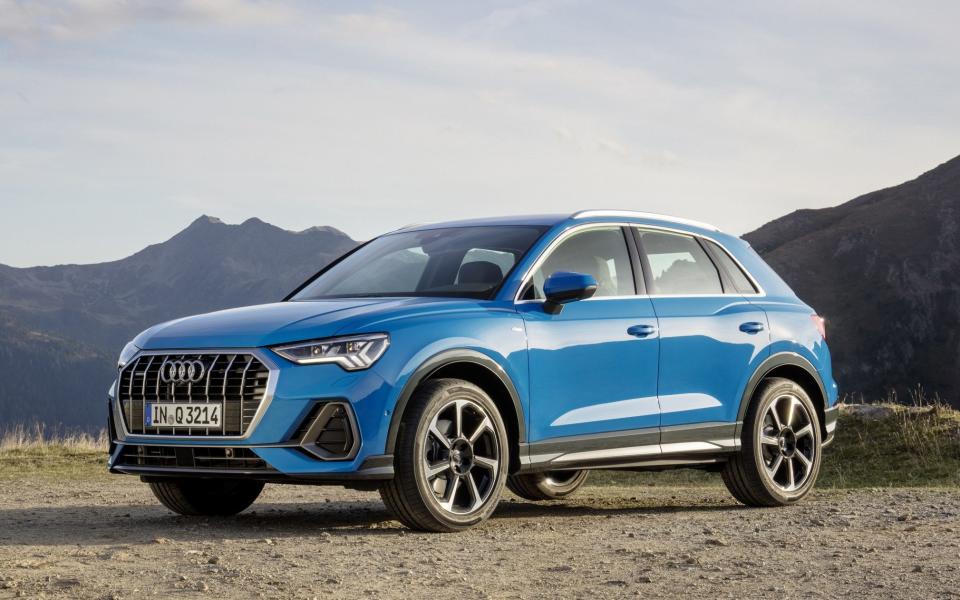
Since the facelift a couple of years ago, this sloped-roof 4.5-metre-long crossover has turned into a desirable but expensive machine. The VW Group 1.5-litre engine gives 148bhp and 184lb ft and slightly south of scintillating performance of 127mph and 0-62mph in 9.4sec with Combined fuel consumption of 40.3mpg. Drives nicely and the ride isn’t bad, but the interior is the highpoint with lovely surfaces and real buttons.
BMW X2 sDrive 20i
from £40,515
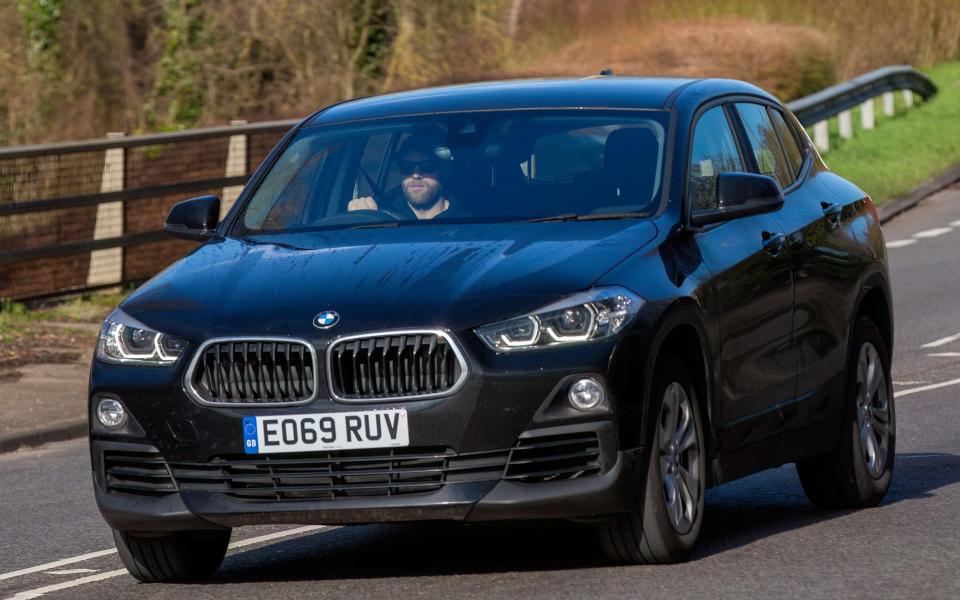
Basically an updated X1 and at 4.55 metres long right in the class average size. The style is indubitably modern and has links with the past, but you need to get used to the grille. Sadly the centre capstan control for the touchscreen has been taken out and the “gesture control” is a useless gimmick. The interior is comfortable and classy, although the rear seats are cramped. A 168bhp/206lb ft 1.5-litre three-cylinder turbo mild hybrid drivetrain gives 0-62mph in 8.3sec and a top speed of 132mph and 44-48mpg Combined consumption.
Peugeot 408 Hybrid GT 136 e-DSC6
from £35,505
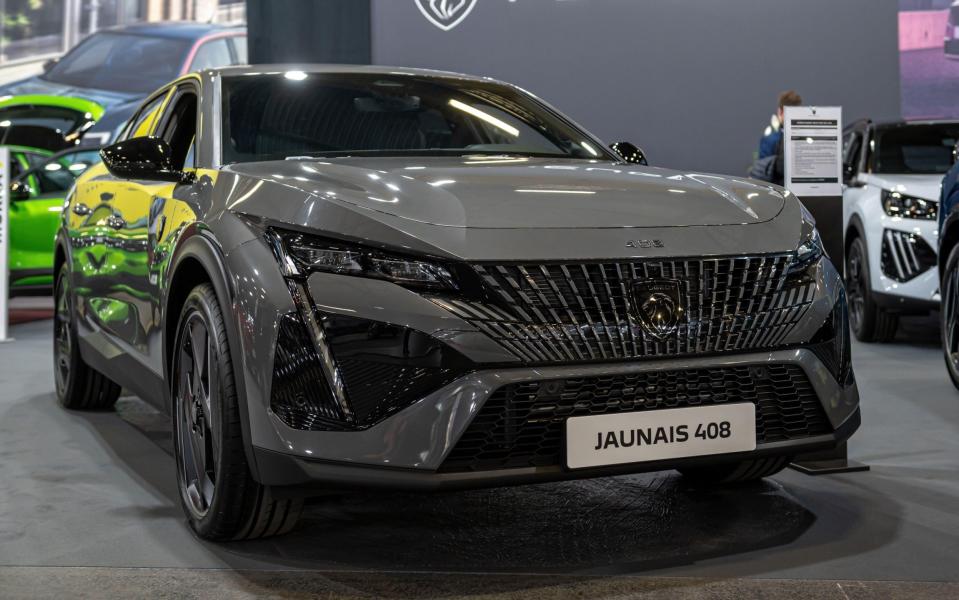
Separated at birth? You decide, but the 408 SUV coupé is uncannily similar to the Rafale; this 4.68-metre four-door hatch is aimed at exactly the same market segment as well. There’s a choice of small-capacity petrol engines, hybrid and plug-in hybrid drivetrains, with the 180bhp total 1.2-litre triple most closely matched to the Rafale tested here with a 131mph top speed, 0-62mph in 10.2sec and 48-58mpg economy. Pretty good to drive, but try before you buy as the small steering wheel i-Cockpit layout is divisive.

 Yahoo News
Yahoo News 
